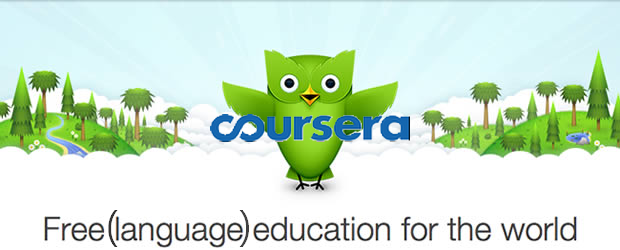Sharing from personal experience, many of us know Duolingo as a language application. One can pick a language they would like to learn starting at the most basic level and making improvements through practice. All of this, free of charge. However, today, arguably, six years late, I became aware of Duolingo’s greater purpose which has intrigued me to share my opinion.
In 2011, Luis Von Ahn, in his Ted Talk “Massive-Scale Online Collaboration” talked about how we, as end-users of the Internet, are aiding Digitization. For instance, making books electronic is not necessarily a challenge for new editions. However, as Von Ahn explains, the older editions which are harder to read, are being digitized with our help. How? Well, when on an online application process, we often have to verify we are humans by entering a string of text we see on-screen. These string of text happen to be scans of text from older books. With millions of individuals filling out the text string each time, the phrase becomes validated and ultimately results in a digitized book.
What Von Ahn further brought to light in 2011, was the introduction of the App Duolingo. He explained that Duolingo would help individuals learn languages meanwhile translating the Web. Ultimately, language learners begin by translating simple phrases which get more difficult as they progress. Whilst millions of users are doing this, this ultimately enables the translation of phrases across the web.
I believe what I find most intriguing about Duolingo are two things:
- The idea of an individual doing something they are willing and motivated to achieve meanwhile serving another purpose – I reckon not many of us have the desire to translate the web, yet, if you’re using Duolingo, you are in fact doing so! Though Duolingo was introduced in 2012, I believe this new business model is even more relevant in the current age. I wonder how many firms have adopted this model. And, which other areas could we adapt this business model to? Where else would this be an effective means to achieve a goal?
- Von Ahn, through Duolingo is addressing a key societal challenges, namely, reducing poverty through education. As he explains, many language courses are only available to a percentage of our population that can afford it (Link). Von Ahn has exploited mobile technology, which is becoming more readily available in rural regions as a means to help reduce poverty by enabling less-privileged individuals an opportunity to learn. I can imagine that purchasing a mobile and installing Duolingo is cheaper than following a large number of language courses. It is genuinely exciting to see how technology is being used as a means to address and overcome societal challenges in ways that are not necessarily obvious.
Reference List:
Von Ahn, L. (2011). Massive-Scale Online Collaboration. Ted Talk Available at: https://www.ted.com/talks/luis_von_ahn_massive_scale_online_collaboration?utm_campaign=tedspread–a&utm_medium=referral&utm_source=tedcomshare [Accessed 18 Sep. 2017].
The Guardian. (2017). Luis von Ahn: the Duolingo entrepreneur teaching languages for free. [online] Available at: https://www.theguardian.com/personal-investments/ng-interactive/2016/sep/15/luis-duolingo-teaching-languages-english-free-poverty [Accessed 18 Sep. 2017].

